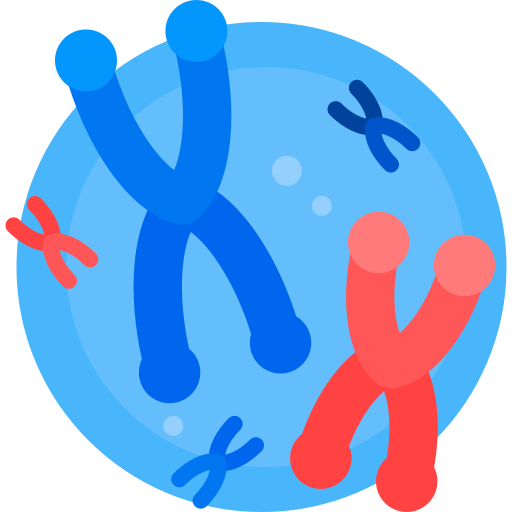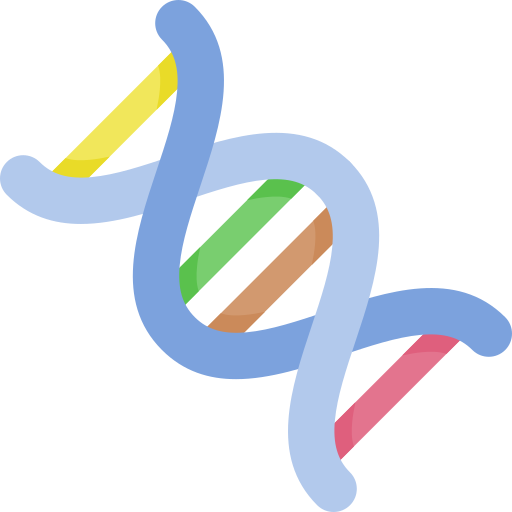 Chromosomes
Chromosomes
Meiosis Label – look at cells in various stages of meiosis, identify and order
How to Interpret a Karyotype – examines images of human karyotypes to identify disorders
Chromosomes and the Tasmanian Devil – cut and paste sets of chromosomes
Meiosis Internet Lesson – look at animations of meiosis and answer questions
Modeling Chromosomal Inheritance – use pipe cleaners to show how genes are inherited; independent assortment, segregation, sex-linkage
Linkage Group Simulation – uses pipe cleaners and beads, students construct chromosomes with alleles and perform crosses, predicting outcomes (advanced)
Karyotyping Online – use a website simulator to learn how to pair chromosomes and diagnose abnormalities
Chromosome Study – cut out chromosomes and tape them in pairs to construct a “paper” karyotype
SRY not SRY – case study on gender and sex chromosomes
Genome Wide Association Study with Dog Coats – explore the inheritance of curly and straight hair
 DNA
DNA
Slides and Notes on DNA, The Double Helix
Coloring DNA – basic image of DNA and RNA for students to color following directions; includes questions and analysis
Transcription and Translation Labeling – label a diagram showing the processes and answer questions
DNA Crossword – puzzle to practice basic terms related to DNA
DNA Detectives: The Case of the Radioactive Phosphorous – a short story about the Hershey Chase experiment with questions.
How Can DNA Replication Be Modeled – students use colored paperclips to model how one side of the DNA serves as a template during replication (semi-conservative)
Drosophila and the Homeobox – explore genetic mutations in fruit flies that are associated with Hox genes
Regulatory Switches in the Stickleback – based on an HHMI activity, explores gene expression in fish (Also available as a slide activity)
Gene Regulation in Prokaryotes – focuses on the lac operon and how some genes are repressible
Analysis: DNA Recombination – simulate DNA recombination using paper slips and sequences
DNA Concept Map – design a concept map showcasing the structure and function of DNA
DNA, RNA, and Proteins
Mutations in DNA and Proteins – explore how mutations can affect the gene for human insulin
Protein Synthesis Practice – use a codon chart to determine sequences of amino acids
Genetics of Sickle Cell – simple version exploring how a change in a base of DNA can cause sickle cell disease
DNA, Proteins, and Sickle Cell – explore how a single change (mutation) in DNA can result in a blood disorder
Transcription & Translation Coloring – shows structures involved, nucleotides, base pair rules, amino acids
DNA Mutations Using Protein Synthesis Simulator – Connected Bio resource which shows how proteins change when a base is changed
How DNA Controls the Workings of a Cell – examine a DNA sequence, transcribe and translate
Design a Snork Using DNA – use sequences of DNA to determine proteins and draw a picture of your newly created “organism”
DNA Sequencing in Bacteria – website simulates the sequencing of bacterial DNA, PCR techniques
HIV Coloring – shows how viral DNA enters and infects a cell
 DNA Extractions and Investigations
DNA Extractions and Investigations
PCR virtual Lab – BioInteractive simulation where you isolate and sequence DNA using polymerase chain reaction
Who Ate The Cheese – simulate gel electrophoresis to solve a crime
Strawberry DNA Extraction – instructions for extracting DNA from a strawberry, very simple, works every time!
DNA Investigation with Strawberries (basic) – simplified version of DNA extraction lab for intro level, with minimal equipment
Investigation: DNA Extraction for AP Biology – students extract DNA from different samples and write a lab report; with Claim, Evidence and Reasoning
DNA Extraction from Saliva – easy procedure to follow, though human saliva does not contain as much DNA as other specimens
Genetic Engineering Concept Map – Complete this graphic organizer on various techniques used in genetics, such as selective breeding and manipulating DNA
Genetic Engineering Simulation – use paperclips to model the activity of restriction enzymes

